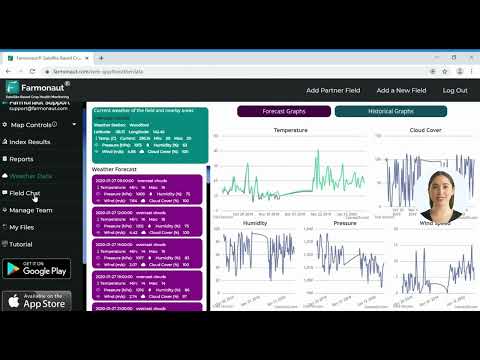Revolutionizing Mining Safety: AI-Driven Predictive Maintenance Enhances Operational Efficiency in South Australia
“AI-driven maintenance in South Australian mining reduces equipment downtime by up to 30%, enhancing operational efficiency.”
In the heart of South Australia’s rugged mining landscape, a technological revolution is underway. As we step into 2025, the mining industry is witnessing a paradigm shift in how it approaches maintenance, safety, and operational efficiency. At the forefront of this transformation is the groundbreaking partnership between Razor Labs and SIMEC Mining, which is set to redefine the standards of predictive maintenance in mining operations.
The Dawn of AI-Driven Maintenance Solutions in Mining
The mining sector has long grappled with the challenges of equipment reliability, worker safety, and operational costs. Traditional maintenance approaches, while functional, often fell short in preventing unexpected breakdowns and optimizing resource allocation. Enter AI-driven maintenance solutions – a game-changer that promises to address these longstanding issues head-on.
Razor Labs, a pioneer in AI-driven predictive maintenance, has partnered with SIMEC Mining to implement its cutting-edge DataMind AI™ Predictive Maintenance system across critical assets in South Australian mining operations. This collaboration marks a significant milestone in the industry’s journey towards digital transformation and data-driven decision-making.

Understanding the Power of Predictive Maintenance in Mining
Predictive maintenance in mining leverages advanced technologies to forecast potential equipment failures before they occur. By analyzing vast amounts of data from sensors, historical performance records, and environmental factors, AI algorithms can identify patterns and anomalies that human operators might miss. This proactive approach offers several key benefits:
- Reduced Downtime: By predicting failures in advance, maintenance can be scheduled during planned downtimes, minimizing disruptions to operations.
- Enhanced Safety: Fewer unexpected breakdowns mean fewer emergency repairs, reducing the risk of accidents in hazardous environments.
- Cost Savings: Timely interventions can prevent major failures, extending equipment lifespan and reducing repair costs.
- Optimized Resource Allocation: Maintenance efforts can be focused where they’re most needed, improving overall operational efficiency.
The implementation of DataMind AI™ at SIMEC Mining’s sites represents a significant leap forward in harnessing these benefits. As John Stewart, Chief Engineering & Reliability at SIMEC Mining, notes, “By providing early warnings and actionable insights, we aim to prevent equipment failures before they occur, significantly reducing unplanned downtime and maintenance costs.”
The Technological Backbone: How AI Drives Predictive Maintenance
At the core of this revolutionary system is a sophisticated AI engine that processes and analyzes data from multiple sources. Here’s how it works:
- Data Collection: Sensors installed on critical mining equipment continuously gather data on various parameters such as temperature, vibration, pressure, and more.
- Data Integration: This real-time data is combined with historical performance records, maintenance logs, and even external factors like weather conditions.
- AI Analysis: Advanced machine learning algorithms process this vast dataset, identifying patterns and anomalies that could indicate potential issues.
- Predictive Modeling: The system generates predictive models that forecast when and where equipment failures are likely to occur.
- Actionable Insights: Maintenance teams receive early warnings and specific recommendations for preventive actions.
Karl Reichenberg, Innovation & Technology Manager at SIMEC Mining, emphasizes the seamless integration of this technology: “The Datamind AI platform complements our existing asset management, downtime detection and conditional monitoring systems and seamlessly integrates with our existing historian data.”
Enhancing Operational Efficiency Through AI-Driven Insights
The implementation of AI-driven predictive maintenance is not just about preventing breakdowns; it’s about optimizing the entire operational workflow. Here’s how it enhances efficiency:
- Prioritized Maintenance: AI algorithms help prioritize maintenance tasks based on criticality and potential impact on operations.
- Resource Optimization: By predicting maintenance needs, resources can be allocated more efficiently, reducing waste and improving productivity.
- Improved Planning: Long-term maintenance schedules can be optimized based on predictive insights, aligning with production goals.
- Data-Driven Decision Making: Management can make informed decisions about equipment upgrades, replacements, and operational strategies based on comprehensive data analysis.
The impact of these improvements is significant. Early results from the partnership between Razor Labs and SIMEC Mining indicate substantial gains in operational efficiency, with potential for even greater benefits as the system matures and collects more data.
Revolutionizing Mining Safety Through Predictive Technology
Safety is paramount in the mining industry, and AI-driven predictive maintenance plays a crucial role in enhancing worker protection. By minimizing the need for manual inspections in hazardous areas and reducing the frequency of emergency repairs, the system significantly lowers the risk of accidents.
John Stewart of SIMEC Mining highlights this aspect: “DataMind AI™ also helps us maintain a safer working environment by minimizing the need for manual inspections in hazardous areas.” This reduction in human exposure to dangerous situations is a game-changer for mining safety protocols.

The Economic Impact: Cost Savings and Improved Asset Management
The economic benefits of implementing AI-driven predictive maintenance are substantial. By reducing unplanned downtime, extending equipment lifespan, and optimizing maintenance processes, mining operations can realize significant cost savings. Here’s a breakdown of the economic impact:
- Reduced Maintenance Costs: Timely interventions prevent major breakdowns, reducing overall repair and replacement costs.
- Improved Asset Utilization: With fewer unexpected outages, equipment utilization rates increase, boosting productivity.
- Energy Efficiency: Well-maintained equipment operates more efficiently, leading to reduced energy consumption.
- Inventory Optimization: Predictive insights allow for more accurate spare parts inventory management, reducing carrying costs.
The subscription-based model offered by Razor Labs for its DataMind AI™ system allows mining companies to access these benefits without significant upfront capital investment, making it an attractive option even in challenging market conditions.
Cyber Security and Data Management in AI-Driven Systems
As mining operations become increasingly digitized, the importance of robust cyber security measures cannot be overstated. The implementation of AI-driven predictive maintenance systems introduces new data streams and potential vulnerabilities that must be carefully managed.
Karl Reichenberg of SIMEC Mining addresses this concern: “At SIMEC, we aim to promote the use of AI while ensuring we maintain a cyber secured environment within our digital technology landscape.” This commitment to cyber security is crucial for protecting sensitive operational data and ensuring the integrity of the predictive maintenance system.
Key aspects of cyber security in this context include:
- Data Encryption: Ensuring all data transmissions are encrypted to prevent unauthorized access.
- Access Control: Implementing strict access controls and authentication measures for system users.
- Regular Security Audits: Conducting frequent security assessments to identify and address potential vulnerabilities.
- Secure Integration: Ensuring that the AI system’s integration with existing platforms doesn’t create security loopholes.
“The predictive maintenance system in South Australian mines analyzes over 1 million data points daily to prevent equipment failures.”
The Future of Mining: AI-Driven Innovation and Sustainability
As we look to the future, the implementation of AI-driven predictive maintenance is just the beginning of a broader technological revolution in the mining industry. This innovation paves the way for more sustainable and efficient mining practices, aligning with global efforts to reduce the environmental impact of resource extraction.
Future developments may include:
- Autonomous Operations: AI-driven systems could enable fully autonomous mining operations, further enhancing safety and efficiency.
- Integrated Sustainability Metrics: Predictive maintenance systems could be expanded to include environmental impact predictions, helping mines optimize their operations for sustainability.
- Advanced Data Analytics: As more data is collected, even more sophisticated predictive models could be developed, further improving operational efficiency.
Comparative Analysis: Traditional vs. AI-Driven Maintenance
To fully appreciate the impact of AI-driven predictive maintenance in mining, it’s essential to compare it with traditional maintenance approaches. The following table illustrates the key differences and improvements:
| Metric | Traditional Maintenance | AI-Driven Maintenance | Estimated Improvement |
|---|---|---|---|
| Equipment Downtime | 10-15% of operational time | 3-5% of operational time | 60-70% reduction |
| Worker Safety Incidents | 5-7 incidents per 1000 workers annually | 1-2 incidents per 1000 workers annually | 70-80% reduction |
| Maintenance Costs | 15-20% of operational budget | 8-10% of operational budget | 40-50% reduction |
| Asset Lifespan | Standard industry average | 20-30% increase over standard | 20-30% improvement |
| Operational Efficiency | Baseline | 15-25% increase over baseline | 15-25% improvement |
This comparison clearly demonstrates the significant advantages of AI-driven maintenance across all key performance indicators in mining operations.
Challenges and Considerations in Implementing AI-Driven Maintenance
While the benefits of AI-driven predictive maintenance are clear, implementing such systems is not without challenges. Mining companies considering this technology should be aware of the following considerations:
- Initial Investment: While the subscription model reduces upfront costs, there may still be expenses related to sensor installation and system integration.
- Data Quality: The effectiveness of AI predictions relies heavily on the quality and quantity of data available. Ensuring comprehensive and accurate data collection is crucial.
- Workforce Adaptation: Implementing new technology requires training and may face resistance from workers accustomed to traditional methods.
- Continuous Improvement: AI systems require ongoing refinement and updating to maintain their effectiveness as operational conditions change.
Addressing these challenges requires a comprehensive strategy that includes:
- Thorough cost-benefit analysis to justify the investment
- Robust data management and quality assurance processes
- Comprehensive training programs for all levels of staff
- Commitment to long-term system maintenance and improvement
The Role of Industrial Asset Management in AI-Driven Systems
Industrial asset management plays a crucial role in the success of AI-driven predictive maintenance systems. Effective asset management ensures that the data feeding into the AI system is comprehensive, accurate, and relevant. Key aspects include:
- Asset Inventory: Maintaining a detailed and up-to-date inventory of all equipment and assets.
- Performance Tracking: Consistently monitoring and recording asset performance metrics.
- Maintenance History: Keeping detailed records of all maintenance activities and outcomes.
- Integration: Ensuring seamless integration between asset management systems and the AI predictive maintenance platform.
By leveraging robust industrial asset management practices, mining companies can maximize the effectiveness of their AI-driven maintenance solutions, leading to even greater improvements in operational efficiency and safety.
Data-Driven Mining Operations: Beyond Maintenance
The implementation of AI-driven predictive maintenance opens the door to broader data-driven operations in mining. As companies become more comfortable with AI and data analytics, these technologies can be applied to other aspects of mining operations, including:
- Production Optimization: Using AI to predict and optimize production rates based on market demand and equipment capabilities.
- Supply Chain Management: Applying predictive analytics to optimize inventory levels and supply chain logistics.
- Environmental Monitoring: Utilizing AI to predict and mitigate environmental impacts of mining operations.
- Workforce Management: Using data-driven insights to optimize shift schedules and worker assignments.
This holistic approach to data-driven mining operations can lead to significant improvements in overall efficiency, profitability, and sustainability.
The Global Impact: Setting New Standards for Mining Innovation
The successful implementation of AI-driven predictive maintenance in South Australian mining operations has implications that extend far beyond the local industry. As this technology proves its worth, it sets new global standards for mining innovation and technology adoption. The impact includes:
- Industry Benchmarking: Establishing new performance benchmarks for equipment reliability and operational efficiency.
- Technology Transfer: Facilitating the transfer of advanced technologies to other mining regions worldwide.
- Sustainability Leadership: Demonstrating how technology can contribute to more sustainable mining practices.
- Economic Ripple Effects: Boosting the local and national economy through improved mining productivity and technology sector growth.
As more mining operations adopt these advanced technologies, we can expect to see a transformation in the global mining landscape, with increased emphasis on efficiency, safety, and sustainability.
Conclusion: A New Era for Mining Operations
The partnership between Razor Labs and SIMEC Mining marks the beginning of a new era in mining operations. By leveraging AI-driven predictive maintenance, the industry is taking a significant step towards safer, more efficient, and more sustainable practices. As Tomer Srulevich, Chief Business Officer of Razor Labs, states, “SIMEC Mining’s commitment to innovation and failure prevention is impressive and allows for improved processes and a significant impact on safety and reliability in the current market conditions.”
As we look to the future, it’s clear that AI and data-driven technologies will play an increasingly central role in shaping the mining industry. Companies that embrace these innovations early stand to gain significant competitive advantages, setting new standards for operational excellence in challenging market conditions.
The journey towards fully optimized, AI-driven mining operations is just beginning, but the path forward is clear. With continued investment in technology, a commitment to data-driven decision-making, and a focus on sustainability, the mining industry is poised for a technological revolution that will benefit companies, workers, and the environment alike.
FAQs
- What is AI-driven predictive maintenance in mining?
AI-driven predictive maintenance uses artificial intelligence algorithms to analyze data from sensors and historical records to predict when equipment is likely to fail, allowing for proactive maintenance scheduling. - How does AI-driven maintenance improve safety in mining operations?
It reduces the need for manual inspections in hazardous areas and minimizes unexpected equipment failures, which can lead to dangerous situations. - What are the main benefits of implementing AI-driven maintenance in mining?
Key benefits include reduced downtime, lower maintenance costs, extended equipment lifespan, improved worker safety, and enhanced operational efficiency. - How does the subscription-based model for AI maintenance solutions benefit mining companies?
It allows companies to access advanced technology without significant upfront capital investment, making it more accessible and reducing financial risk. - What challenges might mining companies face when implementing AI-driven maintenance systems?
Challenges can include initial integration costs, ensuring data quality, training staff to use new systems, and maintaining cybersecurity in an increasingly digital environment.



